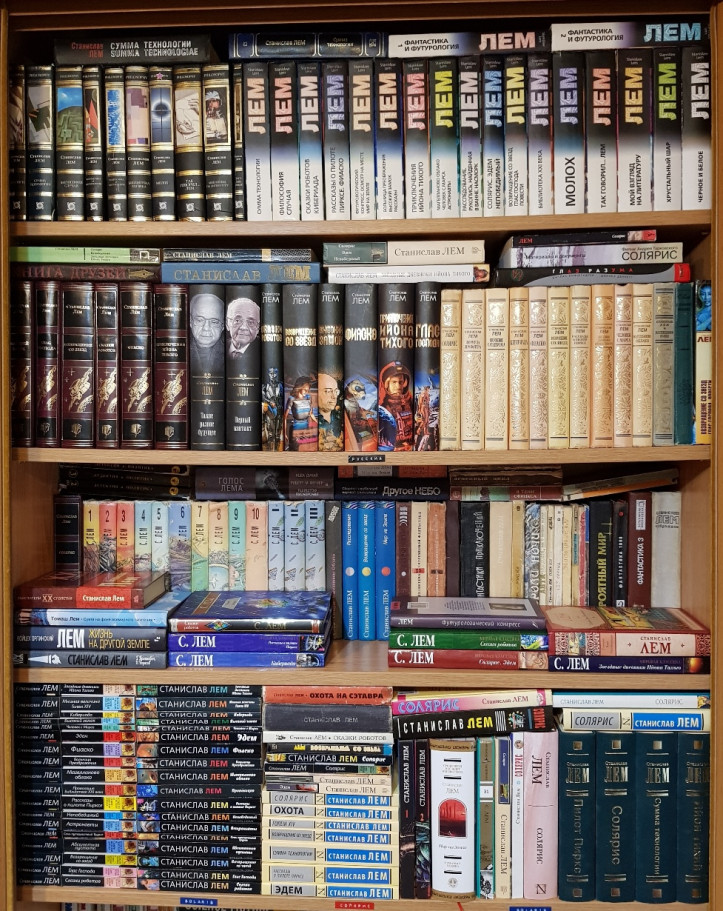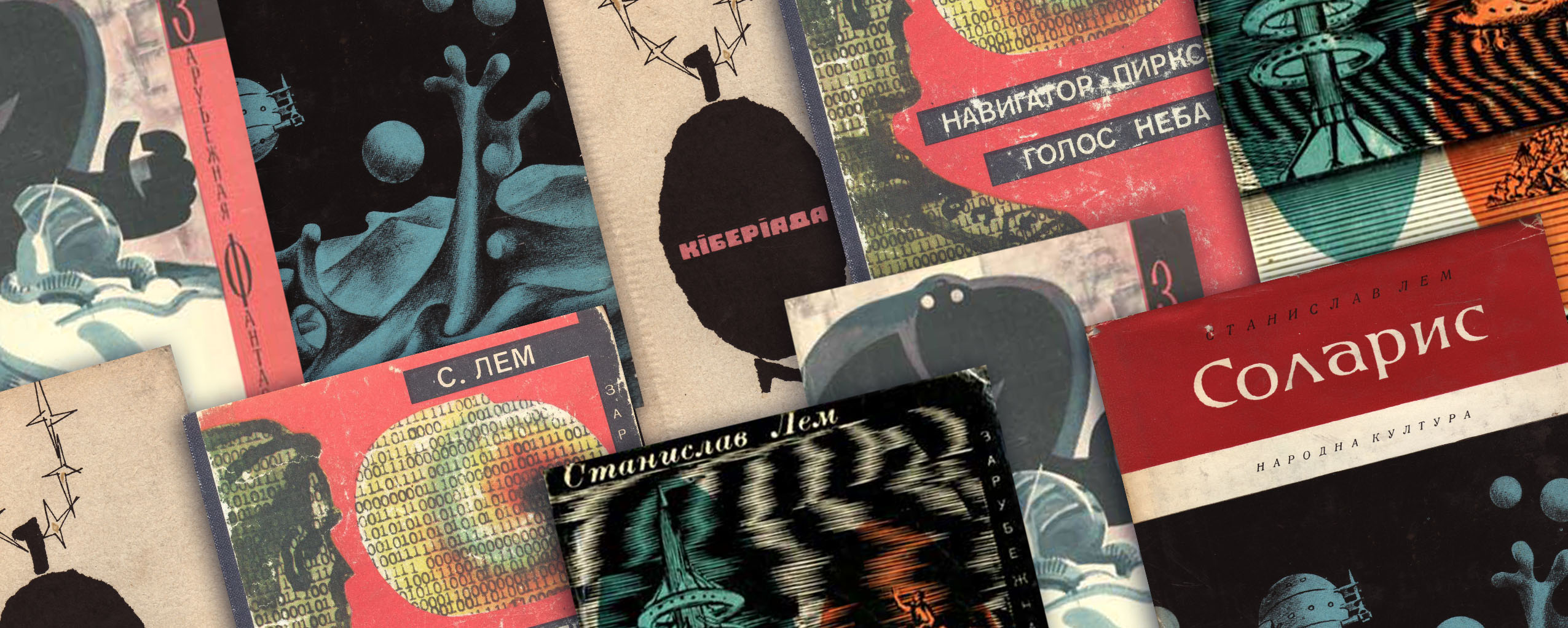
He was translated by more than 80 different people in the Soviet Union, listed in Russian philosophical dictionaries, and Soviet boys were named Stanisław in his honour. Why exactly was Polish science fiction writer Stanisław Lem – the author of Solaris – so well-received in the USSR?
Master writer and acclaimed futurologist Stanisław Lem’s immense influence on Polish – and indeed global – science fiction is still felt today in how we discuss and contemplate the prospects of humankind. Maybe even more so than in the country’s troubled communist past, when his audacious visions served as an exciting glimpse into the multiverse of possible future normalities and, simultaneously, a heart-stopping reminder of what may await beyond our provincial Plato’s cave.
It is an oft neglected fact, though, that Lem’s legacy was also intricately interwoven with the Soviet Union’s futurist aspirations and dreams – beyond Andrei Tarkovsky’s film adaptation of Solaris. In this idiosyncratic Soviet world, Lem was read not only as a writer but foremost as a philosopher, whose name made its way into philosophy dictionaries (where it neighboured the entry for Lenin, something which Lem particularly hated) and whose ideas often gained a second, often quite surprising, sense (as with ‘solaristics’, which in the post-Stalinist Thaw era became a convenient term for Soviet bureaucracy).
Here to talk about the writer’s peculiar Russian presence is the eminent Lem scholar Victor Yaznevich.
Dariusz Kuźma: You have often labelled Lem’s presence in the cultural landscape of the Soviet Union a true phenomenon. How much of it was connected to the fact that his intellectual, awe-inspiring stories about humanity’s presence in the universe started to be published during the early stages of the Space Race?
Victor Yaznevich: Very much, indeed. Lem’s books arrived in the Soviet Union at the end of the 1950s, but became popular in the early 60s, during the times of Soviet optimism about the future, science, astronautics, cybernetics, etc. The Sputnik 1 launch changed the stakes in 1957 and initiated the Space Race, and in 1961, after Gagarin’s first ever manned space flight, Nikita Khrushchev, then the First Secretary of the Communist Party of the Soviet Union, announced that within the upcoming decades the Soviet people would see the rise of a technologically-advanced communist society, including conquering space. World War II was receding into the past, hence it was enough to share such perspectives with a society that wanted to hear them. Lem’s work was in part dealing with such themes. His stories were thus perceived as an element of this optimism, especially The Magellan Nebula – published in Poland in 1955, with excerpts published earlier in “Przekrój” – which dealt with space exploration and the colonization of the solar system, and also showed a future for humanity as a communist utopia. That’s why Lem’s works were accepted into the Soviet Union’s rigorously controlled market, out of the many writers from the Eastern Bloc who might have made a splash in Russia. The USSR did not have, or want, access to Western literature, and Lem’s stories were Western enough to serve this purpose, too.
How would you situate Lem against popular Soviet writers of the time?
The only comparison to be made is with science fiction writers, both those already established, like Alexander Kazantsev and Ivan Yefremov – the latter being another promoter of communist utopias – and the rising talents, like the Strugatsky brothers, who achieved their greatest fame later. Admittedly, Lem shared ideas and traits with them, but at the same time he was considerably different, both culturally and literary-wise. The 1960s need for science fiction stories was so big, accentuated by the trend of assimilating writers from socialist countries, that he was published mostly without much censure, even if his stories slowly became something quite different from what initially interested the communist decision-makers. The only other Polish writer who could equal Lem in popularity, as well as the number of printed volumes, was Henryk Sienkiewicz. Also due to the film adaptations of his work, always something that makes people take interest in books, which later on was also the case for Lem himself – especially after Tarkovsky’s Solaris.
“Mostly without much censure” suggests that Lem was not impervious to Soviet censorship. What kind of content was removed from Russian editions of his work?
No-one was impervious to censorship, unless they censored themselves in the writing process, or had been commissioned by the government. Lem’s work can be divided into several stages, with the 1956–1970 period being his golden era, the time he was at the peak of his particular type of philosophical science fiction. This is also the time when, in a sort of reverse of what he wrote before 1956 (including The Magellan Nebula), he created dystopian/anti-utopian visions. Many of them alarmed the decision-makers, there were heated debates in the mid-60s about promoting a writer who did not care about communist ideas anymore and could subvert people with his ideas. Even Solaris came under the censors’ scrutiny, with all reflections about God edited out. This was, I believe, the most common action against Lem – against his broadly-defined transcendental themes. To the extent that approximately a third of His Master’s Voice was cut and published under the title The Voice of Heaven, making the novel on the verge of becoming incomprehensible. In Summa Technologiae, Lem’s collection of philosophical essays, the part about the Engineering of Transcendence was cut, too. When someone published something about Lem as a person, a writer, there was basically no mention about his worldview.
But Lem visited the Soviet Union and met with many readers. How was he censored then?
He came officially with other Polish writers in 1962 and 1965. Nobody tried to censor him, it was enough that they controlled his novels and stories. You see, the Soviet Union had not signed any international agreements on respecting intellectual property. They could do whatever they wanted. During live meetings there were many incidents, with one organized at the Moscow State University ending in applause when Lem was asked if he was a communist and said plainly that he was not. The participants knew, their friends and relatives knew, but the official coverage said that he was a communist. Besides, Lem did not have many public meetings, a number of them were visits to science centres, talks with translators. The latter were constantly exchanging letters with him, often apologizing for the changes they had to make and the censorship occurrences, so Lem was well aware of how it went in the Soviet Union. He trusted that the translators were doing everything they could to bring his vision into the Russian language. Sometimes they succeeded, like with the 1965 edition of Return from the Stars, a novel in which a cosmonaut returns to Earth after 100 years and there is no mention of communism! The decision-makers wanted to ban the book, but the translators tricked them. They wrote a foreword explaining different ideas and, knowing that cosmonauts loved Lem, convinced Gherman Titov, the second human to orbit the Earth, to put his name on it. It worked, the man was a hero, no censor could touch it!

Lem’s relationship with the Soviet people was thus quite good, but some made him furious. I am referring to his 1969 visit to discuss the Solaris screenplay with Andrei Tarkovsky.
True enough. Lem was eager to meet Tarkovsky, they exchanged a number of letters and he was glad that such an artist would shoot the adaptation of his novel. He came in 1969, when the production process was well under way, he saw the screenplay, talked to Tarkovsky… and that was it. They quarrelled, and Lem turned his back and left for Kraków. What he did not like was that Tarkovsky was more interested in Earth and its metaphysical matters than in space and the planet Solaris itself. He wrote a number of times, scornfully, that this was not Solaris but a Solaris-like version of Crime and Punishment. He could not agree with such a take. Besides, he was well aware of Tarkovsky’s growing reputation, knew that the film may distort his singular vision for subsequent generations. He was right, to an extent. Solaris was quickly announced a film classic and the term Solaris has been incorporated into the vocabulary of modern Russian culture, politics, even psychology, where the ‘Solaris effect’ refers to the phenomenon of seeing and interacting with the spectres of deceased relatives and close friends. But the truth is, if there was one reason Lem’s popularity flourished in the USSR in the 1970s, and stayed that way to this day, it was actually Solaris. People flooded in to see Tarkovsky’s film – which was re-released theatrically after digital restoration in 2019 to great acclaim – and took interest in reading the novel. Many of them got hooked, and looked for other novels and stories. You know, apart from the controversies, the changes made by Tarkovsky, the heated discussions of fans and opponents, these are two different works of art. Each is unique in its own way.
Lem was read by cosmonauts, scientists and the Space Race people, but who else? Was he a writer beloved only by the intelligentsia, or did the working classes read him too?
It is difficult to estimate, if not impossible. Russian editions of Lem’s work were printed in 13 million copies. I mean, in the more-than 60 years since his first book was published. About seven to eight million of these were published in the Soviet era. Impressive? It depends. It is a bigger number than the 10 million copies of his novels, stories and essays printed in Poland, but there are considerably less people in Poland than in Russia. I would say there were approximately 300 million potential Soviet readers in the 1960s and 1970s, so in this sense, eight million is relatively small. But you have to understand that books were not something you would easily buy in the USSR. You would borrow them from libraries, colleagues, even some black market-ish places. One book might have been read by many people. Five? 10? No way to tell. How many among them were representatives of the three generations of the working class who liked to dream about space exploration and alien species? Impossible to know. How many did not have any idea who Stanisław Lem was? Many, for sure. But he remained popular throughout the years, the proof of which were the new editions of his works published in the 80s and the 90s. For example, 1987’s collection of Solaris/The Magellan Nebula had 400,000 copies, 1988’s collection of Solaris/The Invincible/The Star Diaries had 600,000 copies. Quite a number for a crumbling Soviet empire, is it not?
It is, but that begs the question of what status Lem has in contemporary Russian culture?
Well, he is still often published, without any kind of censorship and with interesting forewords by experts, and I believe he could still be called a phenomenon nowadays. Much has changed since Gorbachev’s glasnost and the perestroika period. Limits on Western culture and literature were lifted, English and American novels and films and other things flooded the market. Nevertheless, Lem’s stories and the ideas they promoted were not lost among all of what was happening. Now, there are new editions – across the last few years, Solaris was printed in 125,000 copies, and the 21st century saw the publication of the almost complete works of Stanisław Lem in 20, 700-page volumes. The truth is, there are more Lem works published in books in Russian than in Polish. Overall, in over 60 years, there have been 326 Lem-related publications. Still, it is a matter of proportions, because Russia is a considerably larger country and more diverse in its readership, than Poland.
Then Lem’s popularity is not about space exploration, scientific and philosophical themes, or any of that, but rather he is considered a classic that is worth knowing?
Yes and no. He is definitely considered a classic of philosophical science fiction, a genre not that popular among modern writers. In Russia, the last 10 years have brought no masters of hard science fiction, the stories being rather light sci-fi or verging on fantasy themes. I think this, too, is a problem in English literature. Philosophical science fiction is very difficult to create convincingly. And it seems more and more people want such stories, something to ponder on, not only consume. I heard a number of people consider Lem’s novels food for thought, something that is not a waste of time. Which is, as we know, the real currency of our times. I believe this is one of the reasons behind Lem’s constant popularity. There are also popular writers who promote Lem’s legacy, the most prominent being Dmitry Bykov. Curiously, he considers Lem’s best novel to be The Investigation, one of the lesser known from his canon and not exactly science fiction, but he discusses his love of Lem’s imagination, the language he used, influencing young people to check out this old Polish writer their parents loved. One thing I am sure of, is that Stanisław Lem’s popularity will not diminish in Russia in the decades to come.
Parts of this interview have been edited and condensed for clarity and brevity.
Victor Yaznevich:
A Lem scholar from Minsk, Belarus with a doctorate in technical sciences. He is a translator of Stanisław Lem into Russian and the author of a 2014 monograph about the author of Solaris. He’s currently working on several books about the Pole, including an anthology of Lem’s work in 60 languages.









